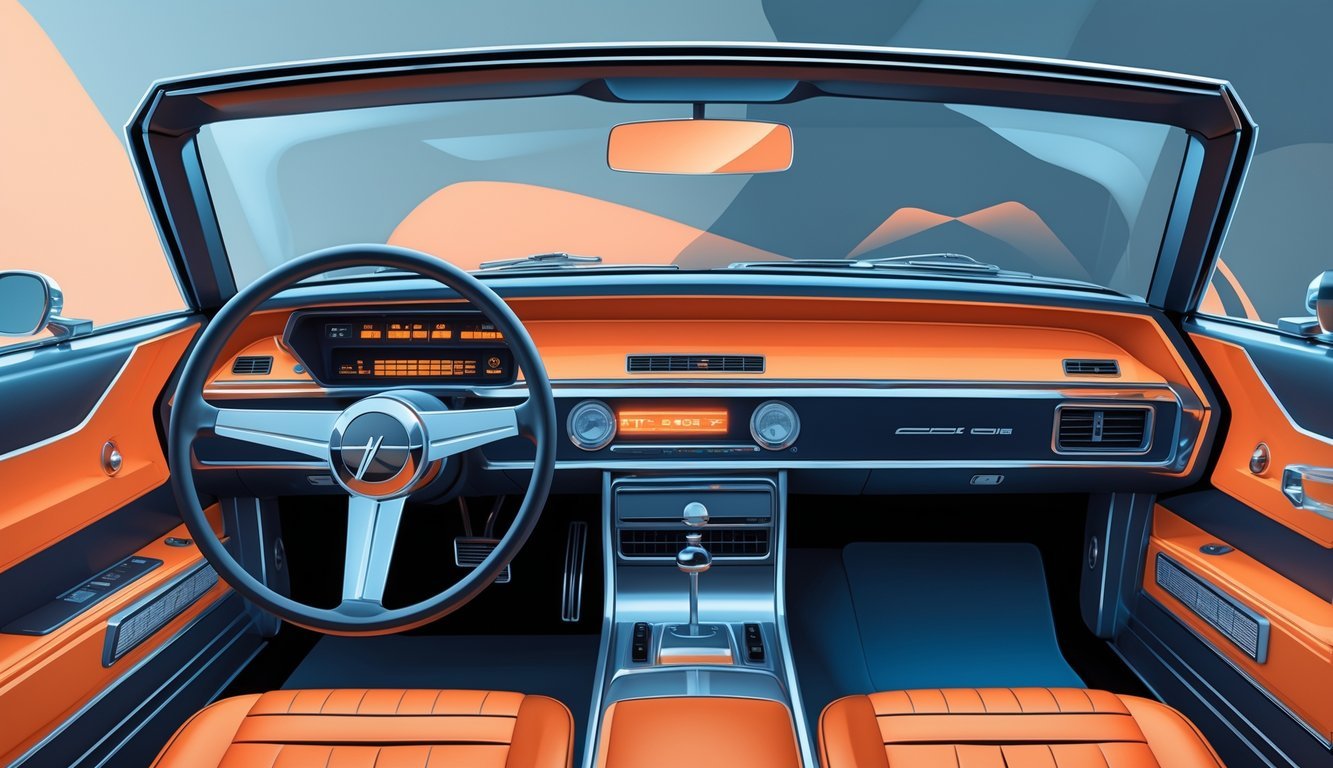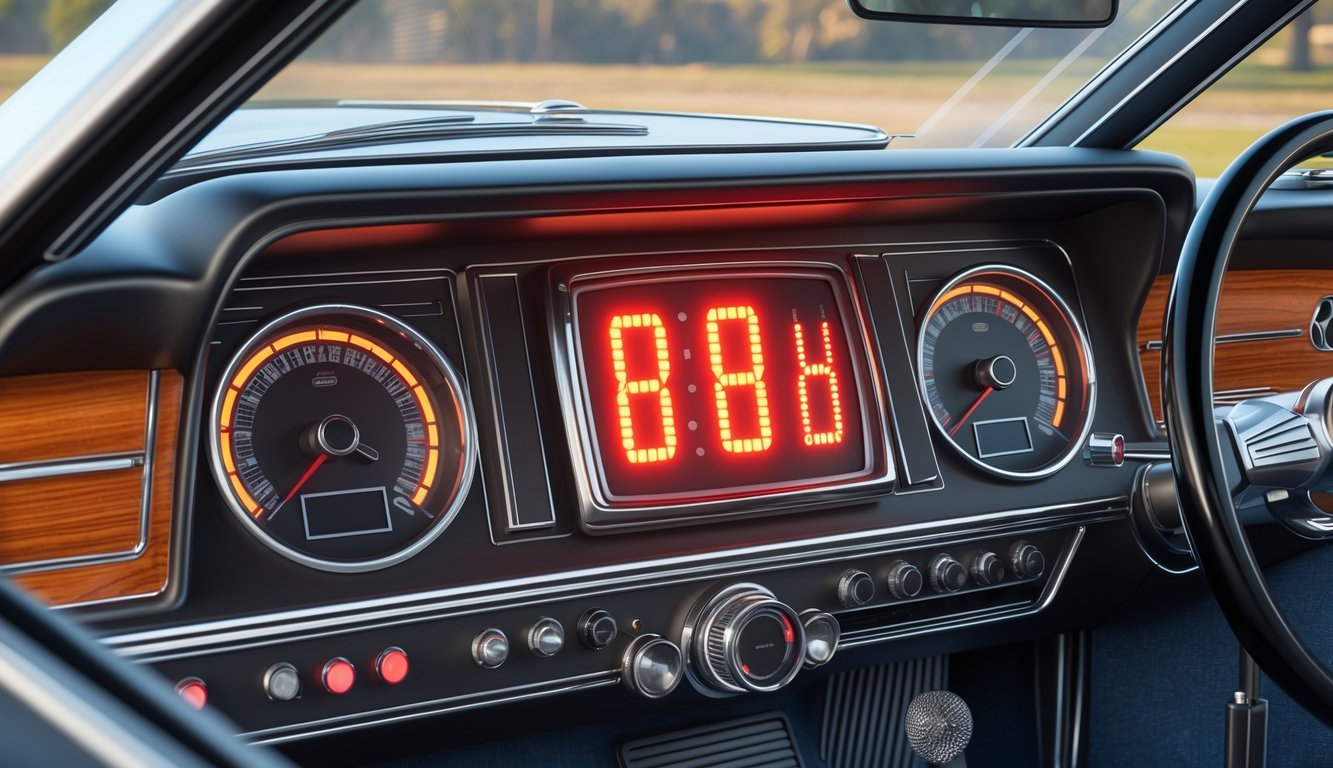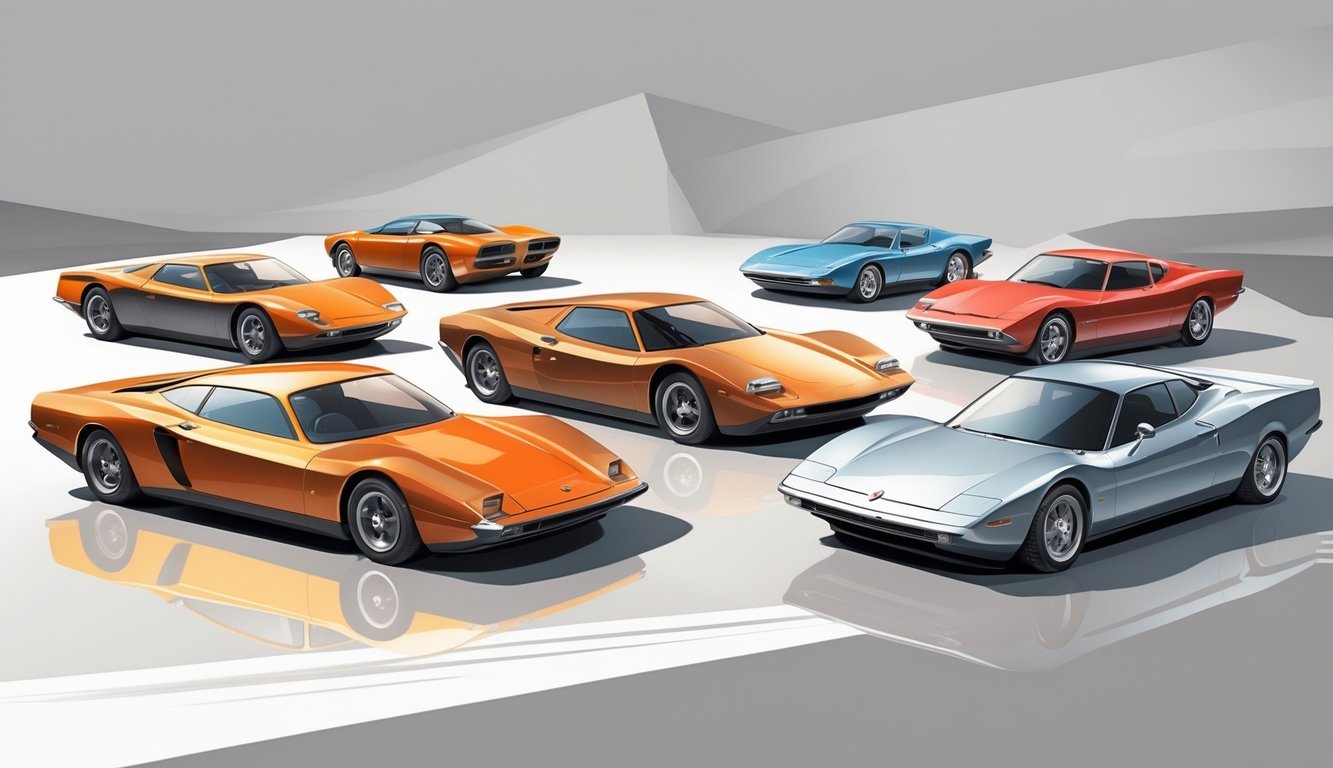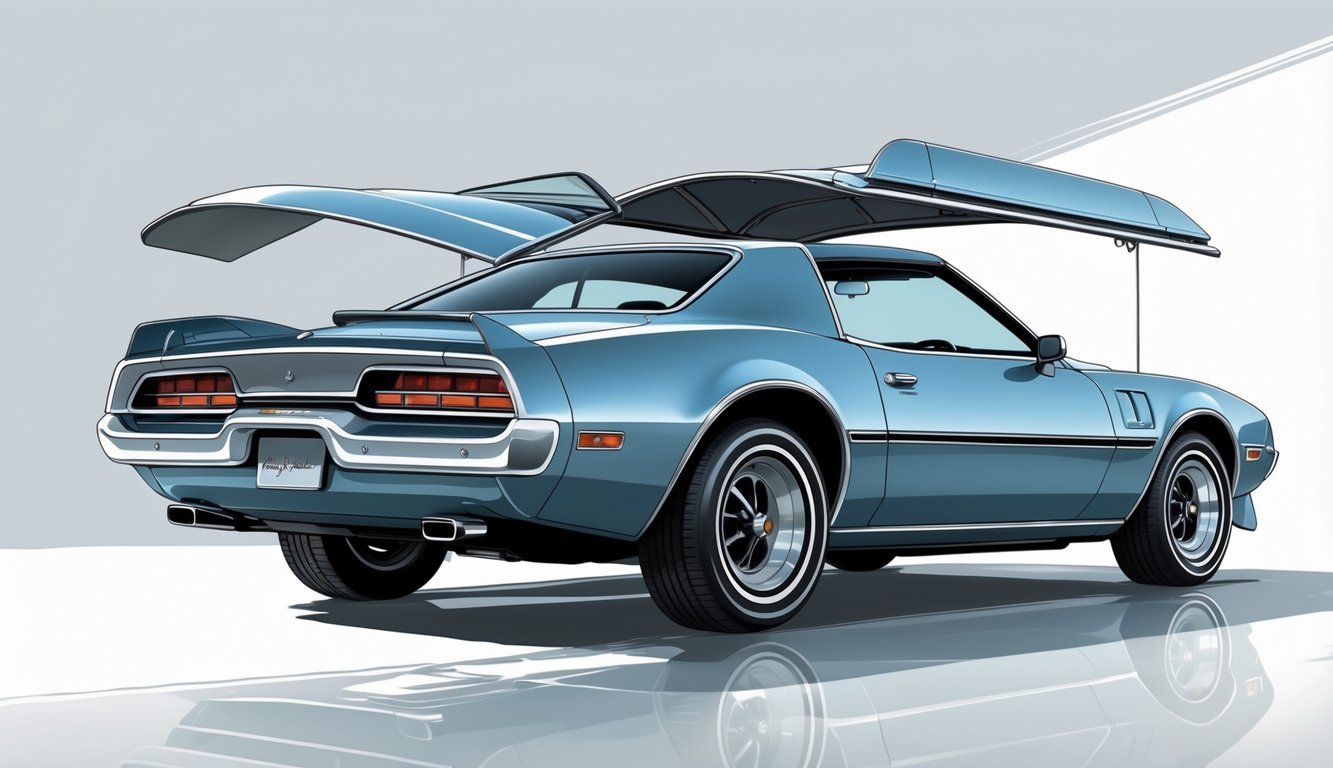PsychNewsDaily Publishers
100 Summit Drive
Burlington, MA, 01803
Telephone: (320) 349-2484
PsychNewsDaily Publishers
100 Summit Drive
Burlington, MA, 01803
Telephone: (320) 349-2484
The 1970s introduced innovative car features like opera windows, digital clocks, hidden headlights, 8-track players, shag carpeting, aerodynamic designs, and T-tops, reshaping automotive culture.

The 1970s really shook up the car world. Cars started looking and feeling totally different from what you see today. Designers and engineers jumped at the chance to try out fresh ideas, making driving feel a bit more exciting and, honestly, a little ahead of its time.
Some of these features probably felt like science fiction back then. Even now, they still manage to turn some heads.
These 7 car features from the ’70s show how automakers got creative with new tech and bold style. If you’re into cars or just like peeking at the past, you’ll get a kick out of these throwback ideas.

Opera windows—remember those? They’re the small, fixed windows near the back of a bunch of ’70s rides. You’d spot them on the C-pillars, giving cars a fancier, almost mysterious look.
Nope, they didn’t open. But they gave your ride a unique edge. Back-seat passengers got a bit of privacy and a sneaky way to peek out without everyone seeing them.
Designers actually borrowed the idea from old horse-drawn carriages, where tiny windows let folks look out quietly. In the ’70s, carmakers ran with it, especially on personal luxury cars.
Curious about this quirky window trend? There’s more on opera windows and their history.

In the 1970s, a digital clock on your dash felt like something out of Star Trek. Instead of squinting at clock hands, you just glanced at bright, glowing numbers.
That made reading the time so much easier, even at night. Some cars even tossed in touch controls for setting the clock, which was pretty wild for the time.
Digital clocks might seem simple now, but back then, they gave your car a slick, space-age feel. It was almost like you were piloting a spaceship instead of a sedan.
Want to dive deeper into these retro dashboards? Check out retrorewindhub.com.
Hidden retractable headlights just looked cool. When you switched them off, they’d disappear, leaving the front of your car smooth and clean.
This trick made cars like the Corvette or Mazda RX-7 look way more futuristic. The vibe was sporty, almost like the car was hiding a secret.
Besides looking awesome, the design actually helped with aerodynamics. Your car cut through the air a bit better. Safety rules eventually ended the trend, but honestly, fans still miss them.
Curious about how these headlights came to be? Here’s a good read on pop-up headlights history.
If you cruised around in the ’70s, you probably remember 8-track tape players. You’d shove in a chunky cartridge and your favorite tunes started playing—no fussing with reels or records.
The tapes ran in a loop inside a plastic case, so you never had to rewind. Just press play and enjoy the ride. The sound wasn’t perfect, but for the open road, it did the trick.
A few cars even had quadraphonic 8-track players for a richer sound. 8-tracks faded out in the early ’80s, but for a lot of music lovers and car fans, they’re still pure nostalgia. Want the full story? Read more about the rise of 8-tracks in the 1970s.

Shag carpeting, honestly, was everywhere in the ’70s—including cars. Automakers covered floors (sometimes even walls) in thick, fuzzy carpet, making every ride feel extra cozy.
Sitting in a car like that? It felt like you were floating on a soft, colorful cloud. The bold carpet matched the wild interiors of the time.
If you’re into retro style, shag carpeting totally nails that vintage vibe. It showed how people wanted their cars to feel fun and different. There’s more on 70s shag carpeting interiors if you want to see some classic examples.

A lot of ’70s cars rocked sharp, wedge-shaped bodies. The look was low and sleek, almost like something out of a sci-fi comic.
That shape wasn’t just for show. It actually helped cars move through the air better, making them a bit more efficient.
People loved the wedge because it felt fast and futuristic, kind of like a jet. Iconic cars from that era used the style to stand out.
If you want to check out some wild designs, here’s a collection of wedge-shaped cars from the 70s.

T-tops gave you a taste of open-air driving without losing the safety of a solid roof. You’d pop out two panels, separated by a strong bar, and suddenly the sky was above you.
In the ’70s, lots of sports cars offered T-tops. If the weather was good, you’d take out the glass panels. If not, just snap them back in.
It was way easier than dealing with a full convertible. Plus, the look was just cool. Want more on T-tops? Here’s a look back at the history of T-tops.
The ’70s really shook up car culture. New features changed how cars looked and felt, and drivers noticed. These ideas didn’t just fade away—they actually shaped what came next.
A lot of trends from the ’70s hung around for years. Take front-wheel drive, for example. Carmakers started using it more because it made cars handle better and saved space.
Electronic fuel injection showed up and made engines run cleaner and more efficiently. That pushed automakers to care more about safety and emissions.
Details like opera windows, hidden headlights, and digital clocks gave cars personality. The ’70s started a shift toward making your ride feel like yours, not just a way to get from point A to B.
People didn’t always agree on these new features. Some loved the futuristic stuff—like 8-tracks or shag carpet. It made driving more fun, and honestly, who doesn’t like a bit of comfort?
Others hesitated, worrying about cost or whether the tech would actually work. Early digital dashboards, for example, sometimes confused drivers. Still, a lot of folks saw these changes as exciting progress.
Car ads hyped up the innovations, showing off how cool and modern your next car could be. That helped these ideas catch on fast.
Want to see how all these changes shaped car culture? There’s a good read on vehq.com.

Some 1970s features feel old-school now, but a bunch of those ideas still shape the cars you drive today. It’s kind of wild how much stuck.
Seatbelts from the ’70s became essential and are still a basic safety must-have. Crash safety designs started back then and just kept improving.
Air conditioning showed up in more cars during the ’70s, and now you’d never buy a car without it. It changed the whole driving experience.
Sure, eight-track players are gone—now it’s all digital music. But that focus on in-car entertainment started in the ’70s.
Ergonomic mirrors and dashboard layouts made controls easier to use. That idea stuck, and your car’s interior is better for it.
The 70s really showed automakers how to blend style, safety, and tech—without making things a headache. Honestly, you can spot that balance in the way your car looks and feels today.
After the oil crises, everyone suddenly cared about fuel efficiency. Automakers started rethinking engines, and your car’s mileage now? That’s no accident.
Back then, luxury features looked a bit over the top. But those wild ideas? They led to the stuff we take for granted, like power windows or remote keyless entry.
That era proves how taking early risks can spark real improvements. Sometimes those experiments stick around, or smarter tech replaces them down the line.
If you’re curious about how those 1970s innovations stack up now, take a look at the six best car innovations from the 1970s.